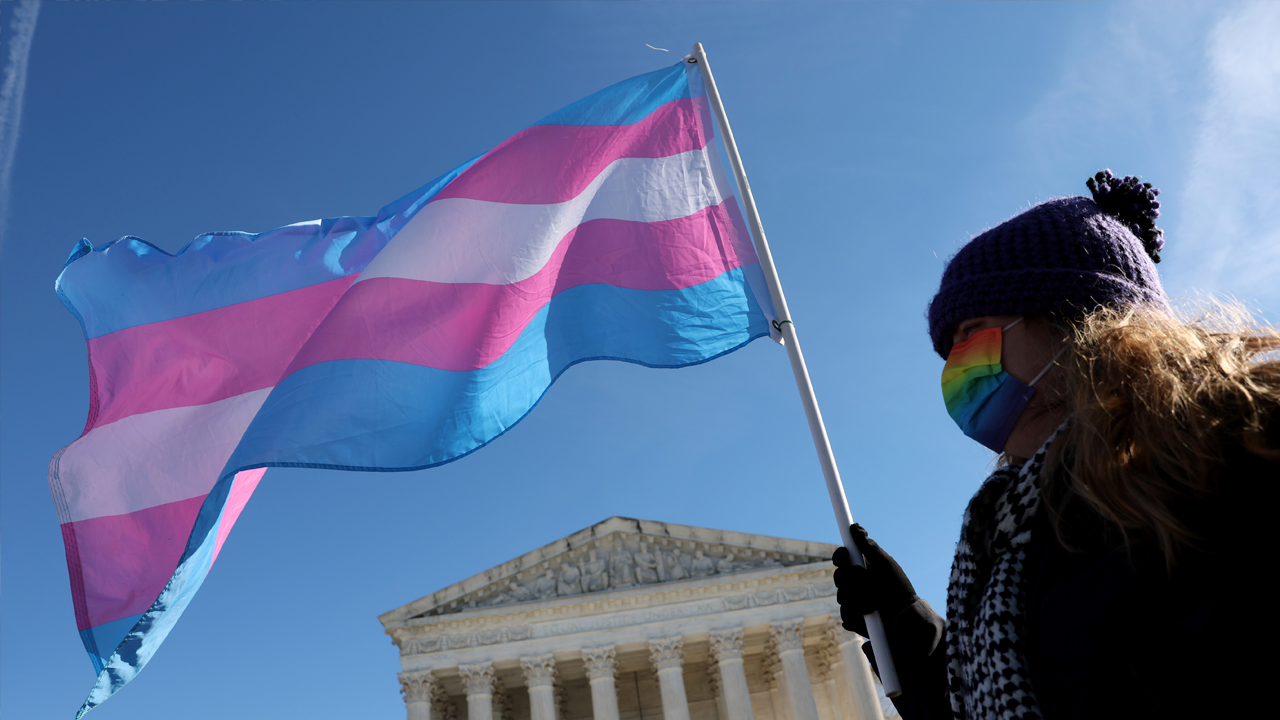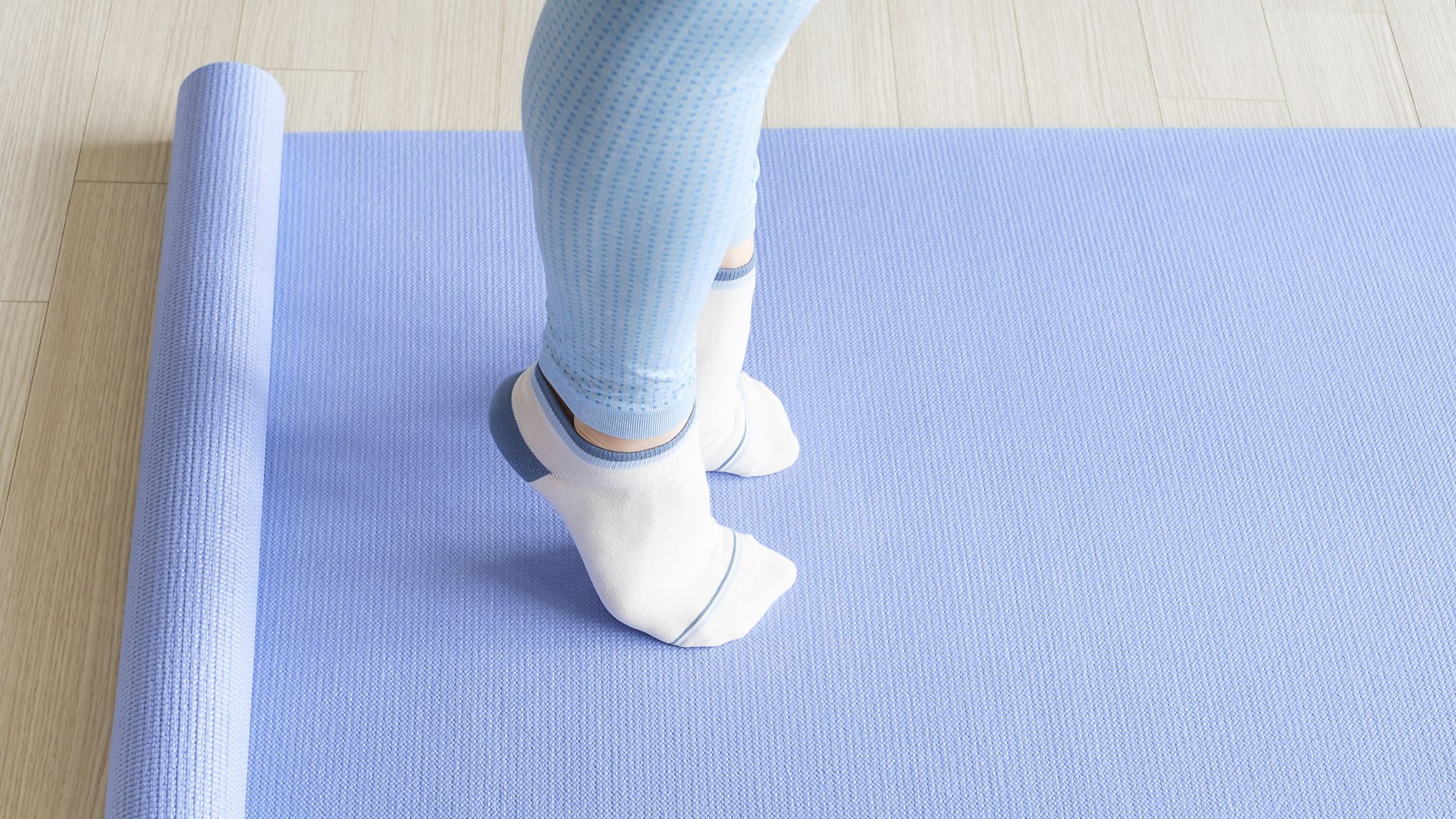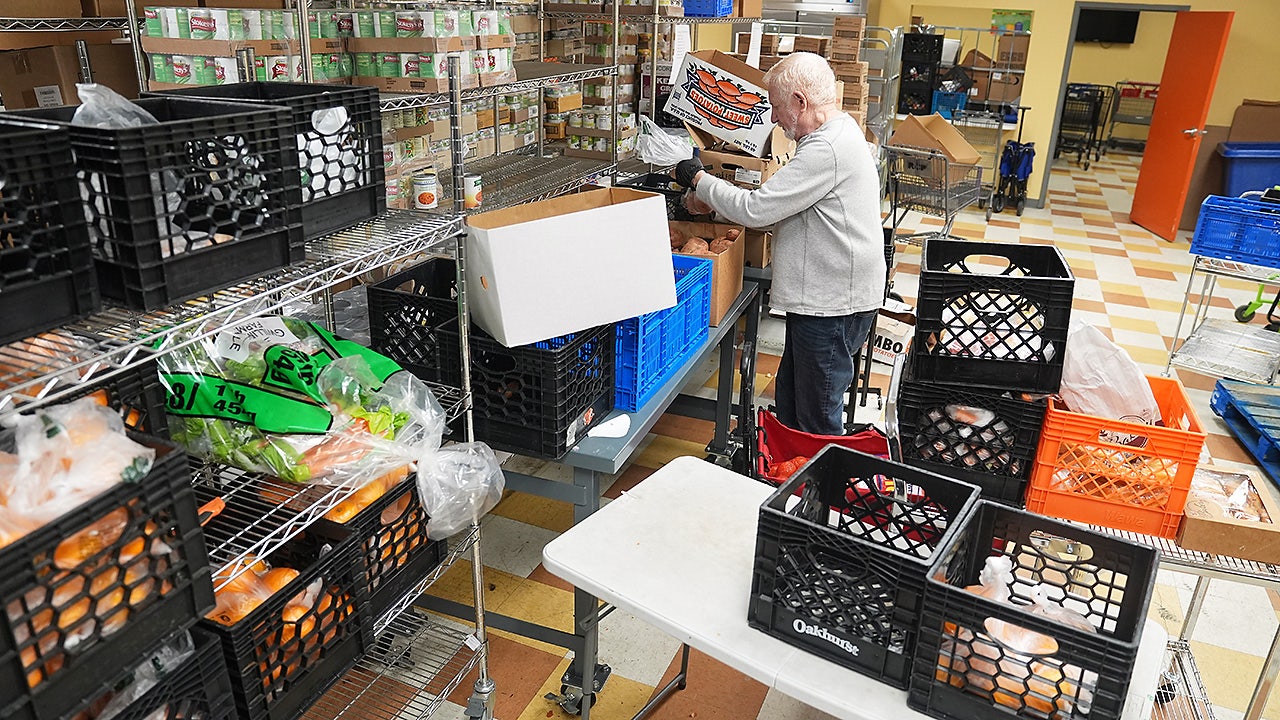Alaska
Bill to expand definition of ‘village’ qualifying for water funds passes Alaska House • Alaska Beacon
What in Alaska counts as a village? When it comes to state money for drinking water improvements, the definition can be fraught.
In a close vote, the Alaska House on Wednesday passed a bill that would add six road-system communities to the list of rural communities that qualify for the Department of Environmental Conservation’s Village Safe Water program.
Technically, the measure, House Bill 114, would expand the definition of “village” as used by the program, to include communities of up to 1,500 people from the current 1,000 threshold. It would also allow unincorporated census-designated places to be added to the list of eligible villages.
If it wins final passage in the Senate, the measure would expand the list of program-eligible villages to include Talkeetna, Sutton-Alpine and Buffalo Soapstone in the Matanuska-Susitna Borough, Funny River on the Kenai Peninsula, Tok in the Interior and Prudhoe Bay on the North Slope.
The bill’s consideration comes at a time when abundant federal money, much of it made available through the Infrastructure Investment and Jobs Act, is flowing into Alaska for rural water and sanitation upgrades. Much of that funding comes to the Village Safe Water program through the Environmental Protection Agency’s Alaska Native Villages and Rural Communities Water Grant Program.
The bill’s sponsor, Rep. Kevin McCabe, R-Big Lake, said the Village Safe Water program has done much over the years to improve Alaskans’ lives and that more Alaskans should have access to its benefits.
The program “stands as a beacon for our commitment to public health and environmental stewardship providing essential aid to upgrade sanitation and water facilities in rural areas,” McCabe said in floor debate.
Four years after the last federal census, the Village Safe Water program is now due for a revision in the way qualifying villages are defined, McCabe said. The last such revision was in 2011, after the 2010 Census, he noted.
The 22-18 vote followed floor debate that was emotional at times.
Opponents said they worried that adding the six road-accessible communities to the village list would put them in competition for funds with truly needy and remote rural communities.
“There are a number of communities that are struggling – struggling to get basic water infrastructure, that don’t have access to the road system, that don’t have the ability to take an hour and half drive to Fred Meyer’s, that have to deal with a number of insanely high grocery prices, that have to deal with realities that are completely departed from the rest of the state,” said Rep. CJ McCormick, D-Bethel. His rural district encompasses Yukon-Kuskokwim Delta villages that are poverty-stricken, remote and, in many cases, lacking basic water and sanitation services.
Rep. Alyce Galvin, D-Anchorage, recounted a visit she made to a Tanana Chiefs Conference event where she learned about the dire water and sanitation needs in remote Indigenous communities in Alaska’s Interior. Solutions for those villages could be delayed if new communities compete for program funds, she said.
“We’re looking at making a change that will have a deep effect on many Alaskans who have been waiting a long time for their share of the pie. What I mean by that is, there are a finite number of dollars going to water and sewer projects,” she said. In contrast to the truly rural areas, which are remote, challenged by environmental conditions and high costs, for communities closer to urban areas, “there are boroughs, there are municipalities, there are ways we can put together money,” she said.
Rep. Ashey Carrick, D-Fairbanks, said the six communities that would be added include some connected to very large cities. Talkeetna, for example, is an hour’s drive north of the fastest-growing urban communities and less than two hours’ drive from Anchorage, she said.
“And then there’s Prudhoe Bay. I almost have to laugh at that one because I’m not quite sure how an industrial population technically connected by a haul road used to haul a huge variety of goods and services up the road is technically a village,” she said.
Others criticism focused on what opponents said was a lack of vetting by the public and by rural-serving organizations. Rep. Bryce Edgmon, I-Dillingham, named the Alaska Native Tribal Health Consortium and the Alaska Federation of Natives as organizations that needed to be better consulted.
“If this measure doesn’t make it through this year – and I have my doubts – let’s have this conversation. Let’s do it right. Let’s bring everybody to the table,” he said.
Bill supporters, however, said an expansion of eligibility for the Village Safe Water program is justified and that water and sanitation needs extend beyond rigid geographic boundaries or classifications.
Rep. Mike Cronk, R-Tok/Northway, reeled off a list of villages in his sprawling Interior district that are on the road system but are officially classified as villages and are facing some of the same water and sewer problems that exist off the road system: Northway, Tetlin, Tanacross, Dot Lake, Eagle, Chitina, Tazlina, Copper Center, Gulkana, Mentasta, Gakona, Minto, Circle and Tanana. And he added in larger communities with significant Native populations: Kenny Lake, Nenana, Manley, Central and his hometown of Tok. Tok would be among the six communities added to the list of qualified villages.
He grew up in Northway, he noted, and the first house he bought was a cabin without running water. “I had two kids, and I hauled water, and we used an outhouse. So I know how that feels,” he said.
Rep. Frank Tomaszewski, R-Fairbanks, another bill supporter, said that even in Fairbanks, Alaska’s second-largest city, there are hundreds and possibly thousands of people who live in “dry cabins,” homes without running water.
House Majority Leader Dan Saddler, R-Eagle River, recounted 1990s-era pledges of former Gov. Tony Knowles to “put the honey bucket in the museum,” a slogan that the Democratic governor used to refer to retiring the plastic-bag-lined buckets that rural residents sometimes use as toilets.
“Over the last 30 years we have spent hundreds of millions of dollars and untold hours of labor to do that, using federal money, using state money, using state labor, to the undisputed benefit of Alaskans,” he said. There has been “tremendous progress” over the years through the Village Safe Water program, he said. “This measure, I believe, seeks to extend the benefit of that program simply to more Alaskans,” he said.
McCabe, in his wrap-up pitch for the bill, pointed out that villages getting grants through the state program must pass through a qualification test that assigns scores.
And he defended the idea of Village Safe Water grants for Talkeetna, a community about 60 miles up the highway from his hometown of Big Lake.
“People are stopping alongside the road on the way to Talkeetna to their dry cabin in the middle of the winter in the dark, when it’s icy and cold, to fill up their water jugs,” he said. “I’m wondering why Talkeetna can’t have some part of the pie that we talked about, that the representative from Anchorage talked about.”
The bill is now on track to be considered by the Senate, though it may get a reconsideration vote in the House.
GET THE MORNING HEADLINES DELIVERED TO YOUR INBOX

Alaska
Remains of 2nd heli-skier killed in March avalanche near Girdwood identified as Montana man

One of the men killed in a Girdwood-area avalanche last March whose body was recovered earlier this week was identified as 39-year-old Charles Eppard, Alaska State Troopers said Friday.
Eppard, of Montana, was one of three heli-skiers fatally engulfed by a March 4 avalanche about 9 miles northeast of Girdwood, in a mountain cirque near the west fork of Twentymile River.
His remains were found Tuesday in the slide area of the avalanche, according to a state Department of Public Safety online statement.
Troopers released Eppard’s name after the State Medical Examiner Office positively identified the remains and his next of kin were notified.
Eppard and two other friends from their high school days in Minnesota, David Linder and Jeremy Leif, were skiing with Chugach Powder Guides, a longtime Alaska heli-ski operator, when they were buried by the avalanche. A fourth member of the group survived.
The avalanche was the nation’s deadliest since 2023.
Troopers recovered the body of 39-year-old Linder, of Florida, from a log jam in a river flowing underneath the avalanche area on Oct. 3. The remains of Leif, 38, haven’t been found.
Alaska
Ranked choice voting opponents say they have gathered 48,000 signatures in effort to repeal Alaska’s election system
A group seeking to repeal Alaska’s ranked choice voting and open primary system says it has gathered enough signatures to put the repeal question on the 2026 ballot.
The group formed after the 2024 election, when a similar effort narrowly failed to pass.
It began gathering signatures in February, looking to collect more than 34,000 signatures from three-quarters of state House districts.
Supporters of the repeal effort now say they have gathered more than 48,000 signatures. Once they’re submitted to the Division of Elections, state workers will review the signatures to ensure they come from registered Alaska voters, were collected according to state laws, and meet the geographic distribution requirements. If approved by the state Division of Elections, the repeal question will appear on the 2026 ballot.
The petition was formed by former state Rep. Ken McCarty, an Eagle River Republican, along with Republican candidate for governor Bernadette Wilson and Judy Eledge, president of the Anchorage Republican Women’s Club.
Ahead of submitting their petition to the Division of Elections for verification, a group of repeal supporters gathered in an Anchorage parking lot to celebrate the milestone. Among the group were McCarty, Eledge, Alaska GOP Chair Carmela Warfield and Bethany Marcum, a former Americans for Prosperity-Alaska director who has taken a leading role in orchestrating the repeal effort.
The roughly two dozen supporters marched across a parking lot to the Division of Elections, following a dump truck festooned with a hand-painted “dump RCV” sign, while blasting the “Rocky” theme song from a portable speaker. At the state office’s doorstep, the truck ceremonially dropped a pile of empty cardboard boxes. The signature booklets were delivered later in the day.
While the effort so far has been led and orchestrated by Republican politicians and activists, McCarty said he did not want it to be perceived as partisan. McCarty himself lost a state Senate race last year to a more moderate Republican, Sen. Kelly Merrick of Eagle River.
Alaska voters approved ranked choice voting and open primaries by a small margin through a ballot measure in 2020.
The voting method has since been used in state and federal elections. It has been celebrated by some elected Alaska politicians who say it favors moderate candidates more likely to work across the aisle. But conservative Republicans have largely decried the election reform, warning that it makes it harder for farther-right GOP members to win elections, and reduces the power of the GOP to pick its own candidates through a closed primary system.
A group funding the repeal effort had raised more than $247,000 by early October. Nearly three-quarters of its funding — $181,000 — came from Aurora Action Network, a political action committee registered with the Federal Election Commission.
The Aurora Action Network formed on June 6. Later that month, it began giving money to the repeal effort. According to federal reports covering June, the committee is funded by Damien Stella, an Alaska engineering consultant, and Michael Rydin, a Texas political activist who has donated large sums to conservative causes.
Most of the group’s spending has gone to Upward LLC, a Florida-based signature gathering company.
Marcum said Thursday that 65% of the petition signatures were gathered by volunteers. The remainder were gathered by paid workers who traveled to rural parts of the state where the group did not find volunteers.
Already, a group called Protect Alaska’s Elections has registered its intent with the state to spend money to defend Alaska’s election system. In 2024, a similar group opposing the previous repeal initiative spent $15 million on a campaign in defense of open primaries and ranked choice voting.
Alaska
SEACAD seizes over 2,200 grams of meth in Southeast Alaska

JUNEAU, Alaska (KTUU) – Two men were arrested in separate drug investigations led by the Southeast Alaska Cities Against Drugs (SEACAD) task force in Southeast Alaska after authorities intercepted packages containing methamphetamine, according to the Juneau Police Department.
In one case, investigators in Ketchikan identified a suspicious package on Oct. 28, that was determined to contain around 2,056 grams – roughly 4.5 pounds – of methamphetamine. The package was delivered on Nov. 1 and picked up by 33-year-old Louisiana resident Adidas Nike Zion Brown, who took it to his residence on the 1000 block of Dunton Street, according to the Juneau Police Department.
After Brown opened the package, officers seized the drugs, which have an estimated street value of $315,960. Officers also seized a firearm at the scene. Brown was arrested and taken to the Ketchikan Correctional Center.
Brown is facing three counts of misconduct involving a controlled substance in the third degree, two counts of misconduct involving a controlled substance in the fourth degree and two counts of misconduct involving a weapon in the third degree.
In a separate investigation, SEACAD identified two suspicious packages shipped to Haines between Oct. 27 and Nov. 4. The packages were found to contain about 235 – about half a pound – of methamphetamine combined.
On Nov. 5, the packages were delivered in Haines and picked up by 30-year-old resident Austin Elmer Benedict Hotch, who took it to a residence on the 200 block of 2nd Avenue, according to the Juneau Police Department. Investigators later seized the drugs, valued at about $50,000. Officers also seized roughly $24,000 in cash.
Hotch was arrested and taken to the Haines Borough Community Jail on a charge of misconduct involving a controlled substance in the third degree.
See a spelling or grammar error? Report it to web@ktuu.com
Copyright 2025 KTUU. All rights reserved.
-

 Culture1 week ago
Culture1 week agoVideo: Dissecting Three Stephen King Adaptations
-

 Austin, TX2 days ago
Austin, TX2 days agoHalf-naked woman was allegedly tortured and chained in Texas backyard for months by five ‘friends’ who didn’t ‘like her anymore’
-

 Education1 week ago
Education1 week agoOpinion | New York City Mayoral Candidates: Who Would Be Best?
-

 Seattle, WA6 days ago
Seattle, WA6 days agoESPN scoop adds another intriguing name to Seahawks chatter before NFL trade deadline
-

 San Diego, CA1 week ago
San Diego, CA1 week agoAdd Nick Hundley, Ruben Niebla to list of Padres’ managerial finalists
-

 Business1 week ago
Business1 week agoCommentary: Meme stocks are still with us, offering new temptations for novice and unwary investors
-
Business1 week ago
Disneyland Resort lays off 100 people in Anaheim
-

 Politics1 week ago
Politics1 week agoVirginia school district slapped with complaint alleging new claims in viral trans locker room fight



:quality(70)/cloudfront-us-east-1.images.arcpublishing.com/adn/FEJ6G62Y6RA2HMR4UHP5Q7EAUQ)













